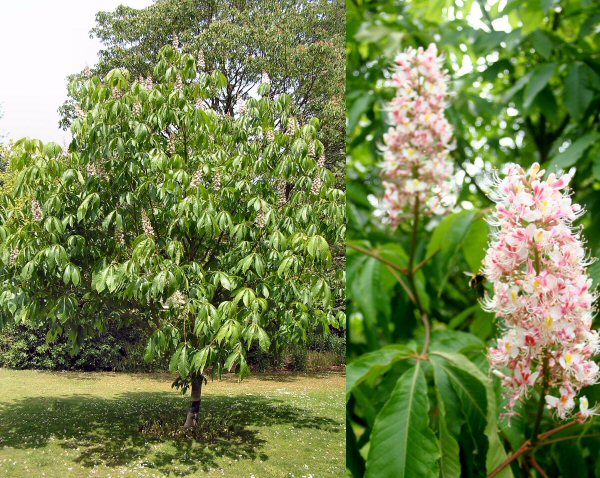Aesculus indica
Indian horse chestnut
Location
The East Lawn.
Description:
A hardy, deciduous tree native to the Himalaya and a close relative of our common horse chestnut it was introduced in 1851 growing to 20 m(60 feet),significantly smaller than its common cousin, and can also be differentiated by its smooth, grey-green bark, rtaher than the red-brown bark of the larger horse chestnut. The leaves, a bright luscious green in spring and summer, have 5-9 thin finger-like leaflets on each stalk. Predominantly white, with pink, red or yellow, flowers appear in late May, some six weeks after other chestnuts, a benefit to bees at that time.'Conkers' appear later but are wrinkled, darker and smaller and the shells are smooth and thin and have no spines.
Site and Care:
Plant in any type of well-drained soil in full sun although it has a preference towards alkaline rather than acid. Pruning is only necessary for shape. 
